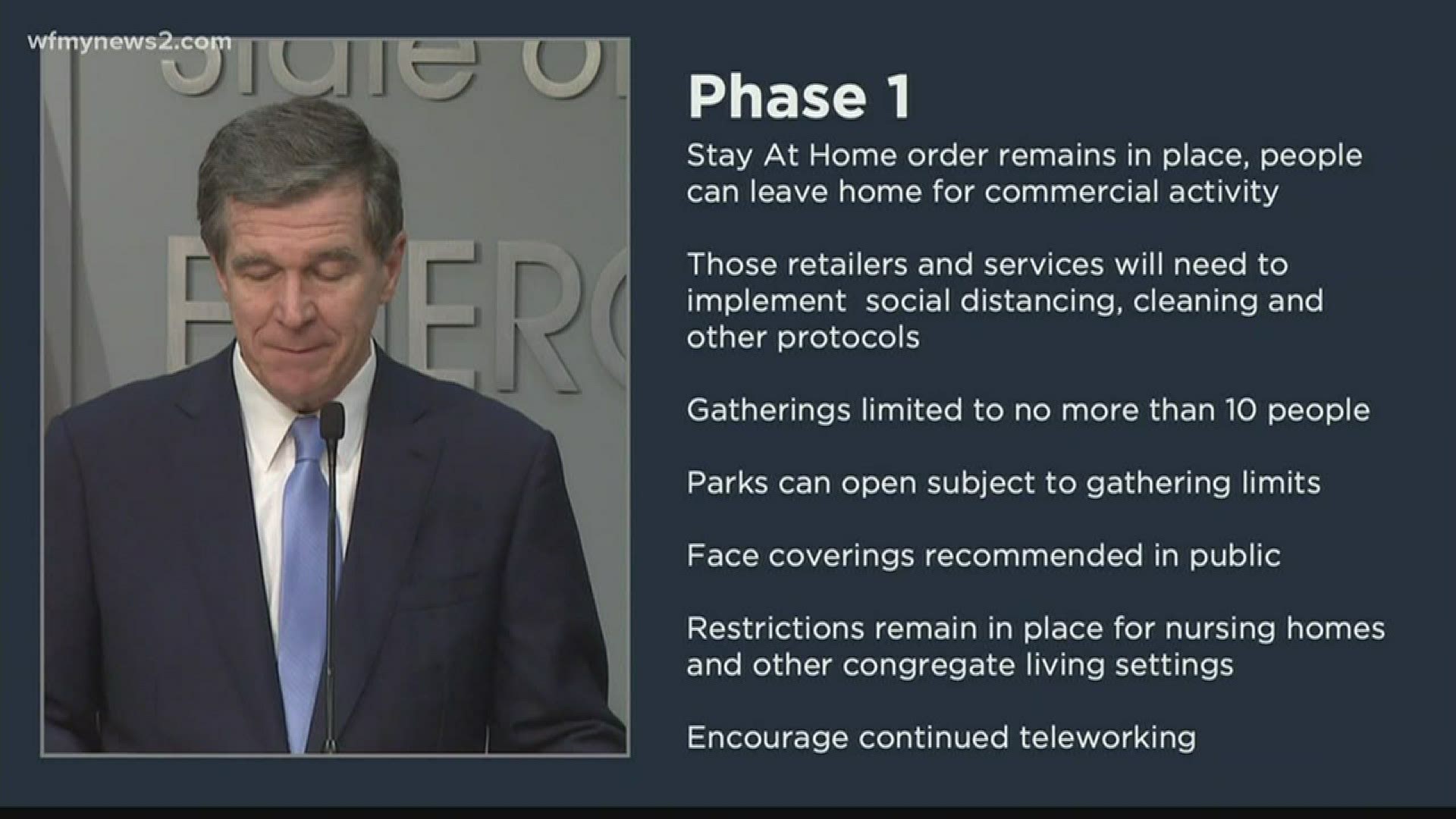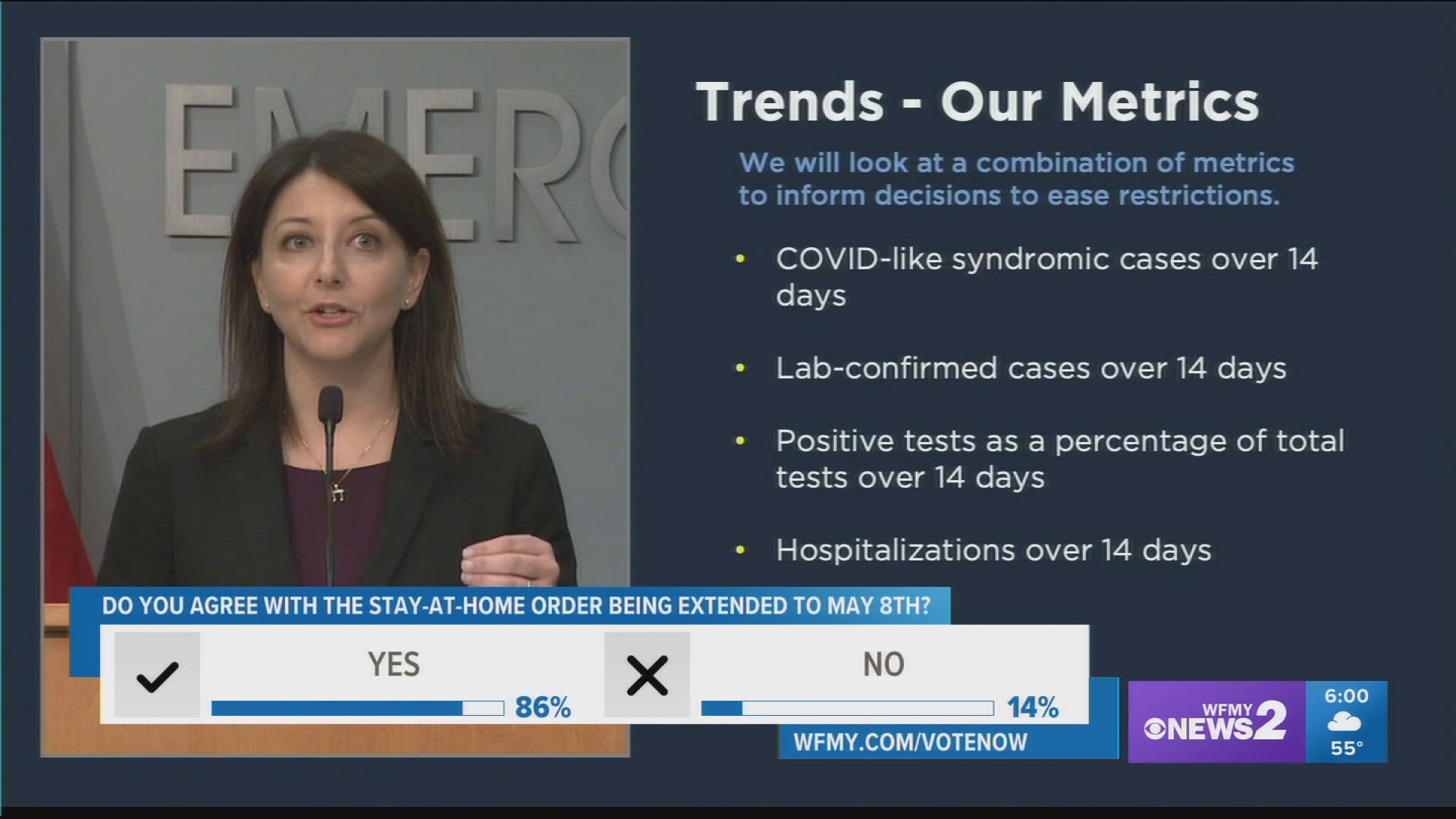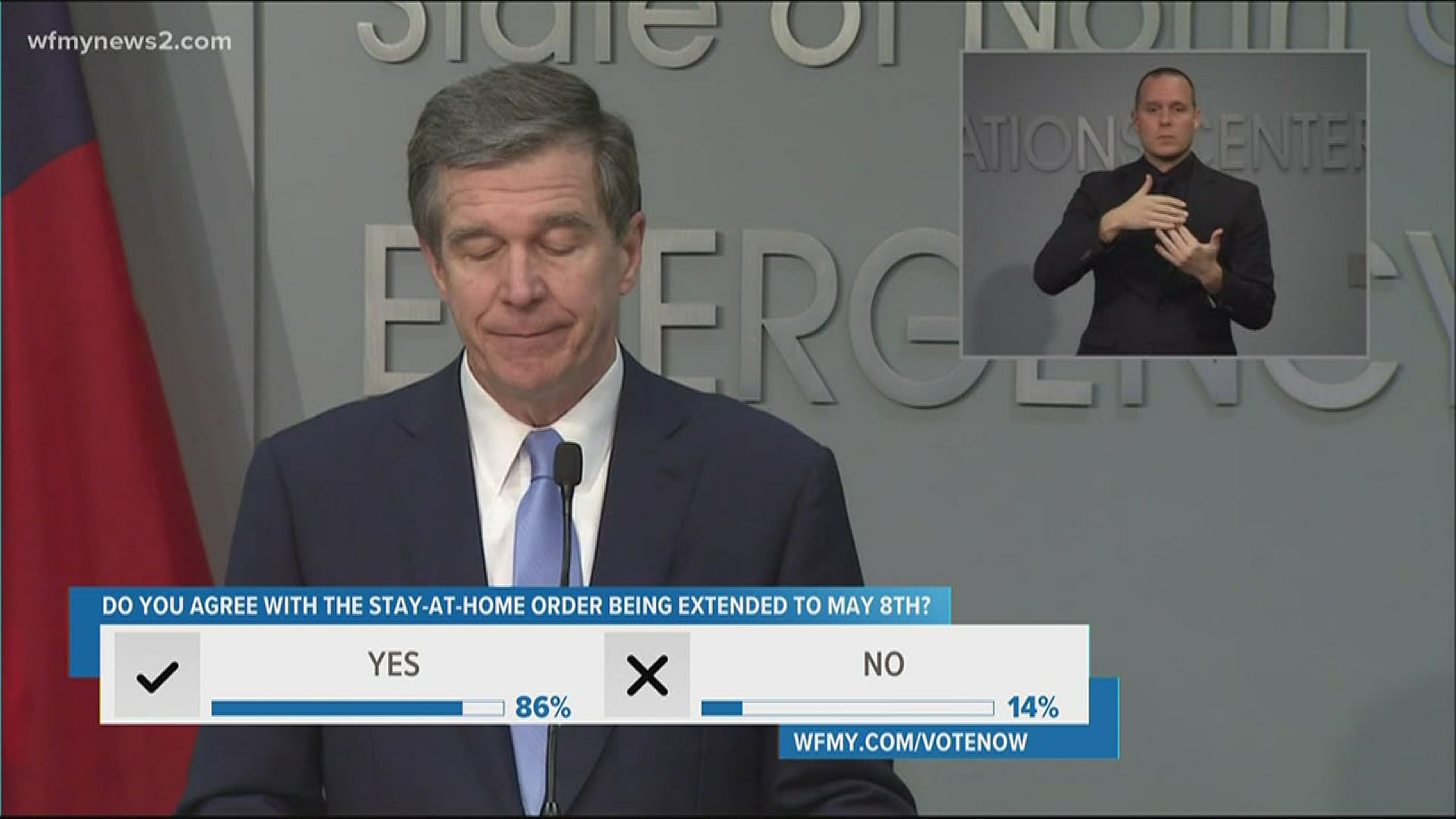RALEIGH, N.C. — Gov. Roy Cooper announced Thursday the extension of the stay-at-home order through May 8, along with a three-phase plan to reopen the state. The statewide stay-at-home order began on March 30 and originally would have ended on April 29.
Cooper said state leaders want to see more downward trends for coronavirus cases, deaths, and hospitalizations before restrictions can be lifted. He said the three-part plan for reopening the state will be based on downward-trending data.
Cooper said we will enter Phase 1 of the plan once North Carolina reaches certain benchmarks in data.
"We have flattened the curve, but we are not there quite yet," said NCDHHS Director Dr. Mandy Cohen during a press conference on Thursday.
Cohen said we still need to see a decrease or a sustained leveling in the number of cases, as well as a decrease in the percentage of positive tests in order to move into phase one of reopening.
The executive order extended closure of restaurants for dine-in service, bars, and close-contact businesses through May 8.
Cooper recently laid out the path forward centered on metrics such as testing, contact tracing, and trends.
“The health and safety of people in North Carolina must be our top priority,” said Cooper. “This plan provides a roadmap for us to begin easing restrictions in stages to push our economy forward.”
According to Gov. Roy Cooper’s press office, the stay-at-home order was extended because North Carolina has not yet seen a downward trajectory of said metrics needed to begin gradually lifting restrictions.
“Data has driven our decisions, starting with the aggressive measures Gov. Cooper took on early to slow the spread of COVID-19. Those actions combined with North Carolinians’ resolve to stay home to protect their loved ones have put our state on the right path,” said Secretary Cohen.
The office said if there is a spike in infections, tightening of restrictions may be temporarily needed.
“We have to get more people back to work. Right now, the decision to stay at home is based on the public health data and White House guidance," said Cooper. "North Carolina needs more time to slow the spread of this virus before we can safely begin lifting restrictions."
Here's a look at the three phases of the reopening plan:
PHASE 1:
- Stay-at-home order remains in place, people can leave home for commercial activity for any business that is allowed to be open. This includes clothing stores, sporting goods stores, book shops, houseware stores and other retailers.
- Those retailers and services will need to implement social distancing, cleaning and other protocols. Those employers will need to screen employees for symptoms, accommodate vulnerable workers and educate them.
- Gatherings are still limited to no more than 10 people
- Parks can open subject to gathering limits. Outdoor exercise will still not be encouraged.
- Face coverings are recommended in public when 6 feet of distancing isn’t possible.
- Restrictions remain in place for nursing homes and other congregate living settings.
- Encouraging continued teleworking
- Local emergency orders with more restrictive measures may remain in place.
PHASE 2 (at least 2-3 weeks after Phase 1):
- Lift the stay-at-home order with strong encouragement for vulnerable populations to continue staying at home.
- Allow limited opening of restaurants, bars and other businesses that can follow strict safety protocols and reduced capacity.
- Allow gathering at houses of worship and entertainment venues at reduced capacity.
- Increase the number of people allowed at gatherings.
- Open public playgrounds.
- Continue rigorous restrictions on nursing homes.
PHASE 3 (at least 4-6 weeks after Phase 2):
- Ease restrictions for vulnerable populations while encouraging social distancing while minimizing exposure to settings where it's not possible.
- Allow increased capacity at restaurants, bars, other businesses, houses of worship, and entertainment venues.
- Increase the number of people allowed at gatherings further.
- Continue rigorous restrictions on nursing homes
State leaders said more testing and tracing is needed to determine trends of the virus. Once we have a better idea of coronavirus trends in the state, that will determine when we can enter the three phases of reopening.
As of Thursday, more than 7,600 people in the state have contracted coronavirus, and 253 people have died.



